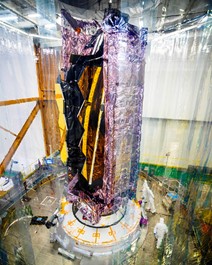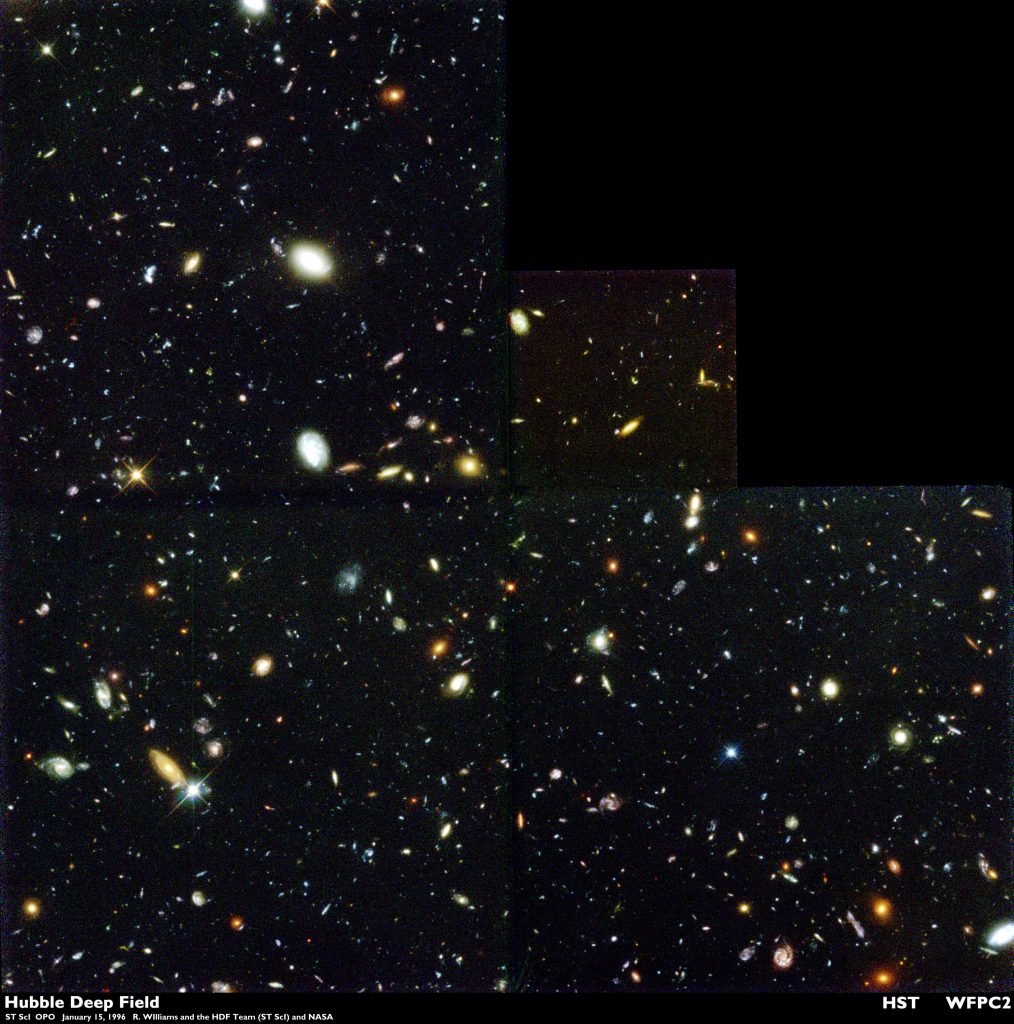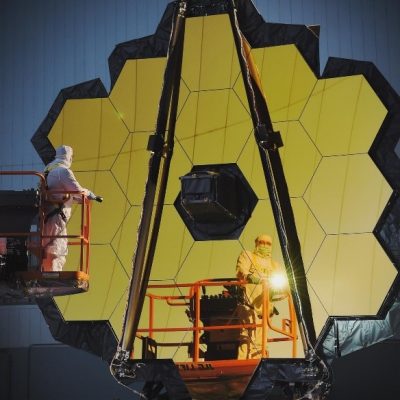Today we celebrate the long-awaited launch of the James Webb Space Telescope (Webb), a joint project by NASA, ESA, and CSA over 30 years in the making.
The telescope is named after James E. Webb, a former NASA administrator and pioneering advocate for space science research. The James Webb Space Telescope is set to succeed the Hubble Space Telescope as NASA’s flagship astrophysics mission, and help scientists unlock secrets of the early universe.

The James Webb Space Telescope is being launched into Earth orbit from ESA’s Spaceport in Kourou, French Guiana, onboard an Ariane 5 rocket. Its destination is just beyond the second Lagrange point of the Earth-Sun system, or L2. A Lagrange point is a position in relation to two celestial bodies – in this case the Earth and the Sun – where the gravitational forces of both bodies are balanced, making it an ideal position for a spacecraft like Webb as the orbit will be relatively stable. L2 is around 1.5 million kilometres away from Earth. From here, Webb will enable humanity to see farther out into the universe than we ever have before.

Light travels at a set speed through a vacuum. Therefore, the further away a light source, the longer it takes for its light to reach us. The images we see of distant stars and galaxies are formed of light that left those stars millions if not billions of years ago- looking deep into space is actually looking back in time. The James Webb Space Telescope’s primary mission is to capture images with light that has been travelling since the first stars came into existence, around 13.5 billion years ago. Before these stars were born, the universe consisted of only three elements: hydrogen, helium and lithium. Heavier chemical elements were created through fusion taking place within stars, and from supernovae. Understanding the processes taking place in the hearts of early stars is key to understanding how our universe came to be.

Unlike its predecessor, Hubble, which primarily captures visible light, Webb is largely an infrared telescope. Its primary mirror is a 6.5m array of hexagonal segments, coated in highly reflective beryllium. This mirror will gather and focus infrared light into the telescope’s scientific instruments, collecting data that will be sent back to Earth via high-frequency radio transmissions.

Infrared astronomy is notoriously difficult. In order to capture images in infrared, Webb must be kept under -223.2°C. Any warmer than this, and the telescope itself would emit infrared radiation and interfere with the light coming from distant stars. To achieve this, Webb is covered in a specially engineered, 5-layer reflective shield to protect it from light and heat, giving its sensitive instruments the best chance to gather only the target data.

Webb’s initial scientific mission is set to last for up to 6 years, with a projected maximum of 10 years. Unlike Hubble, the James Webb Space Telescope cannot be serviced or repaired by astronauts during its mission, so once its hardware fails its life will come to an end. During that time, it’s predicted that the telescope’s scientific findings will revolutionise what we know about the history of the universe.
